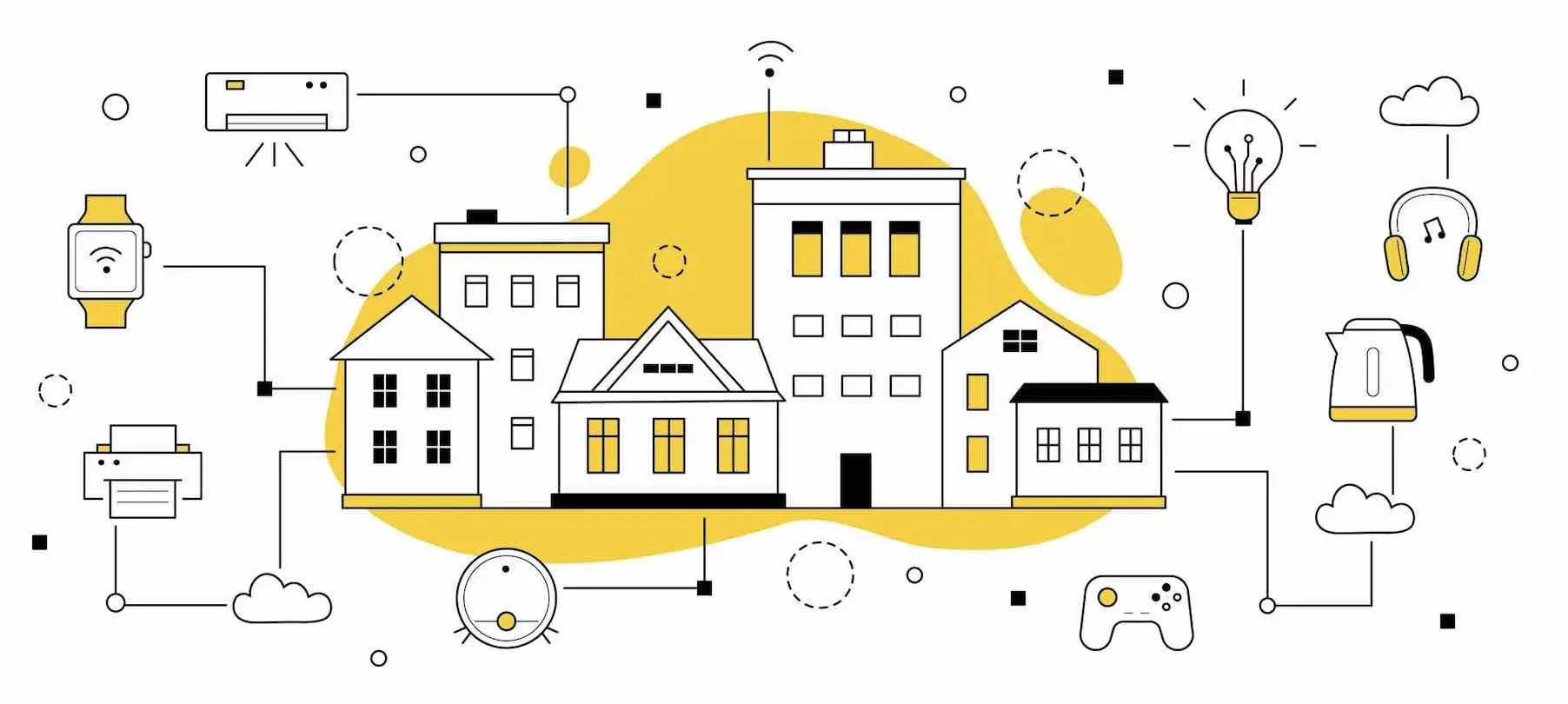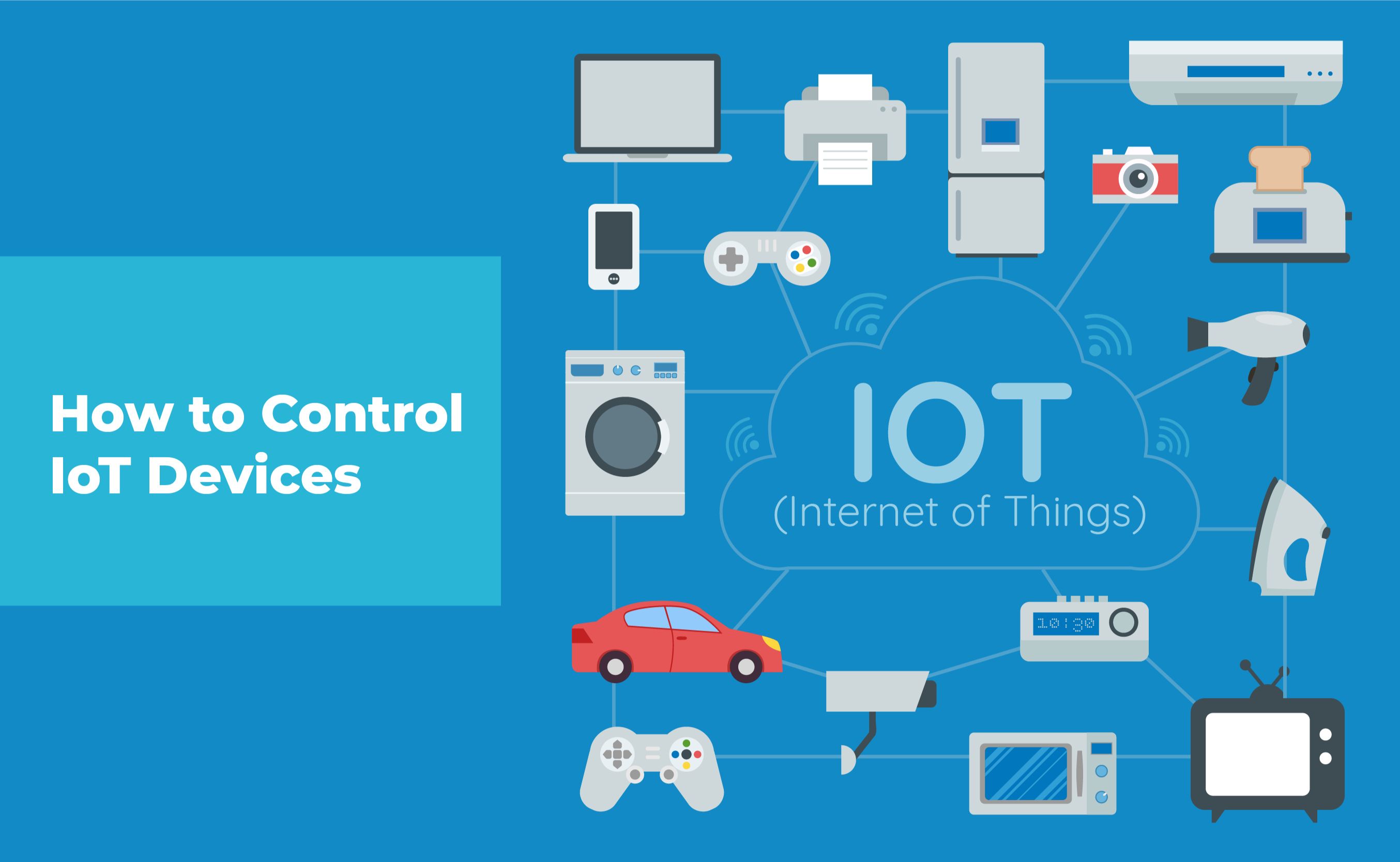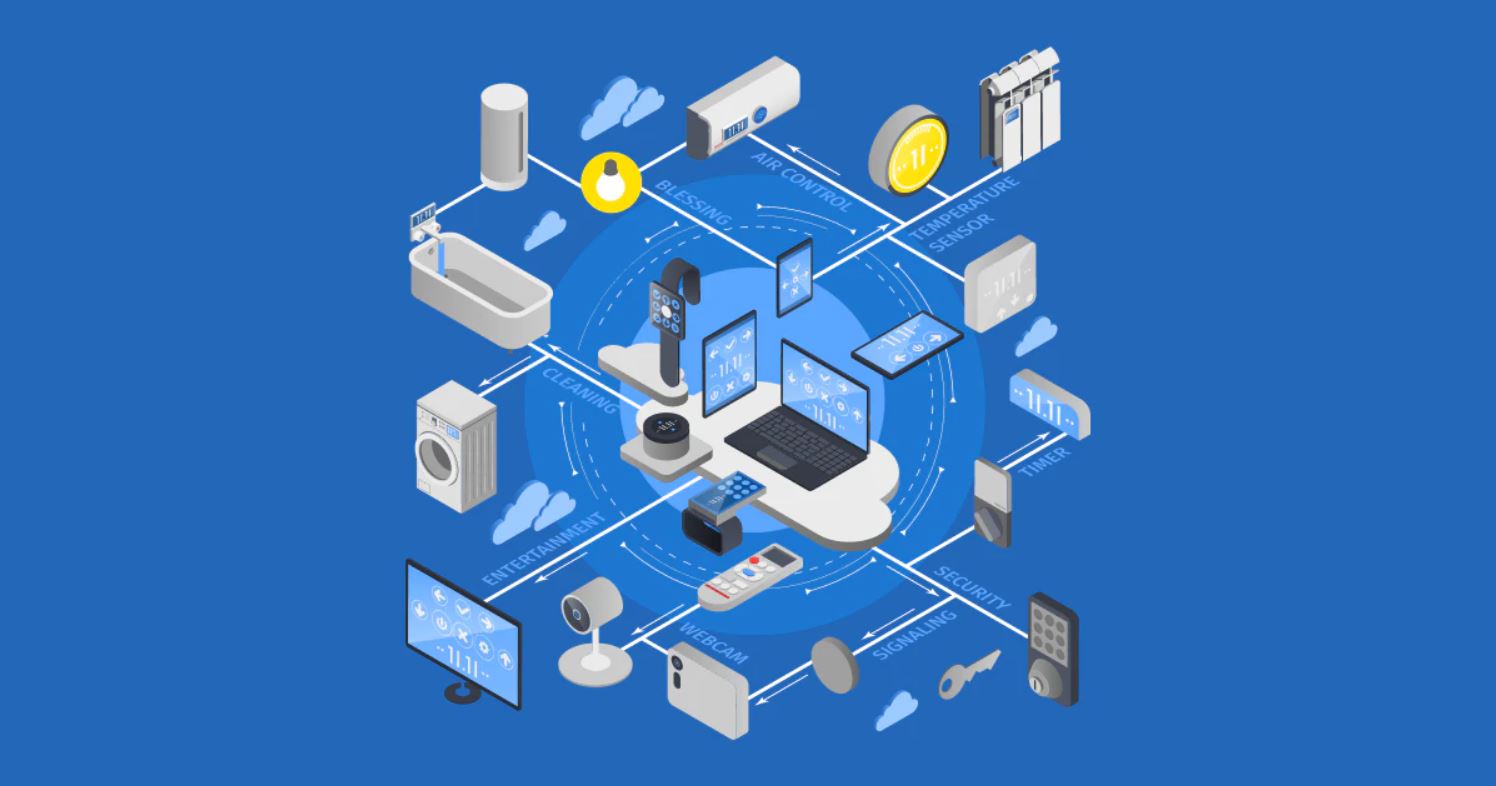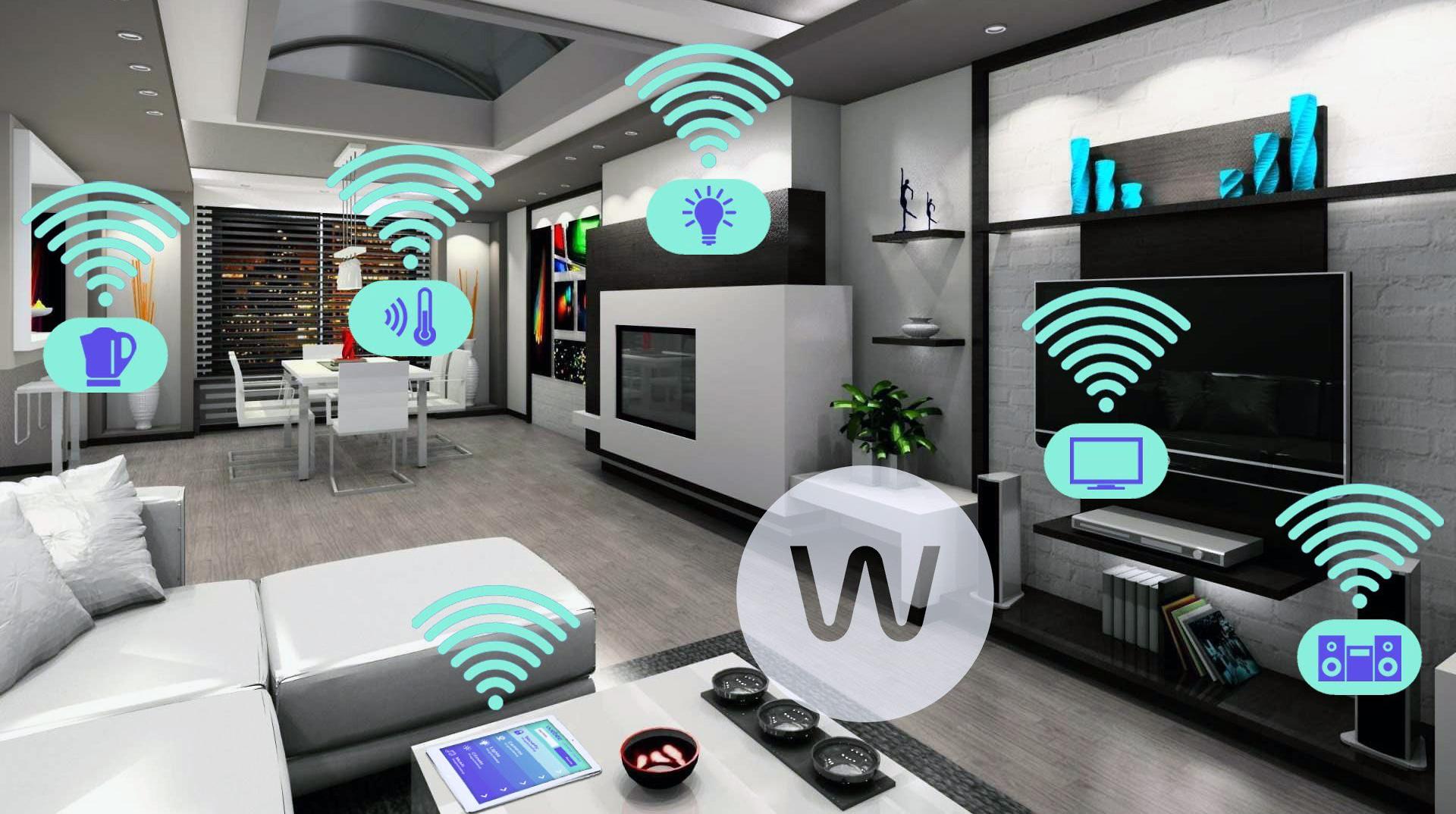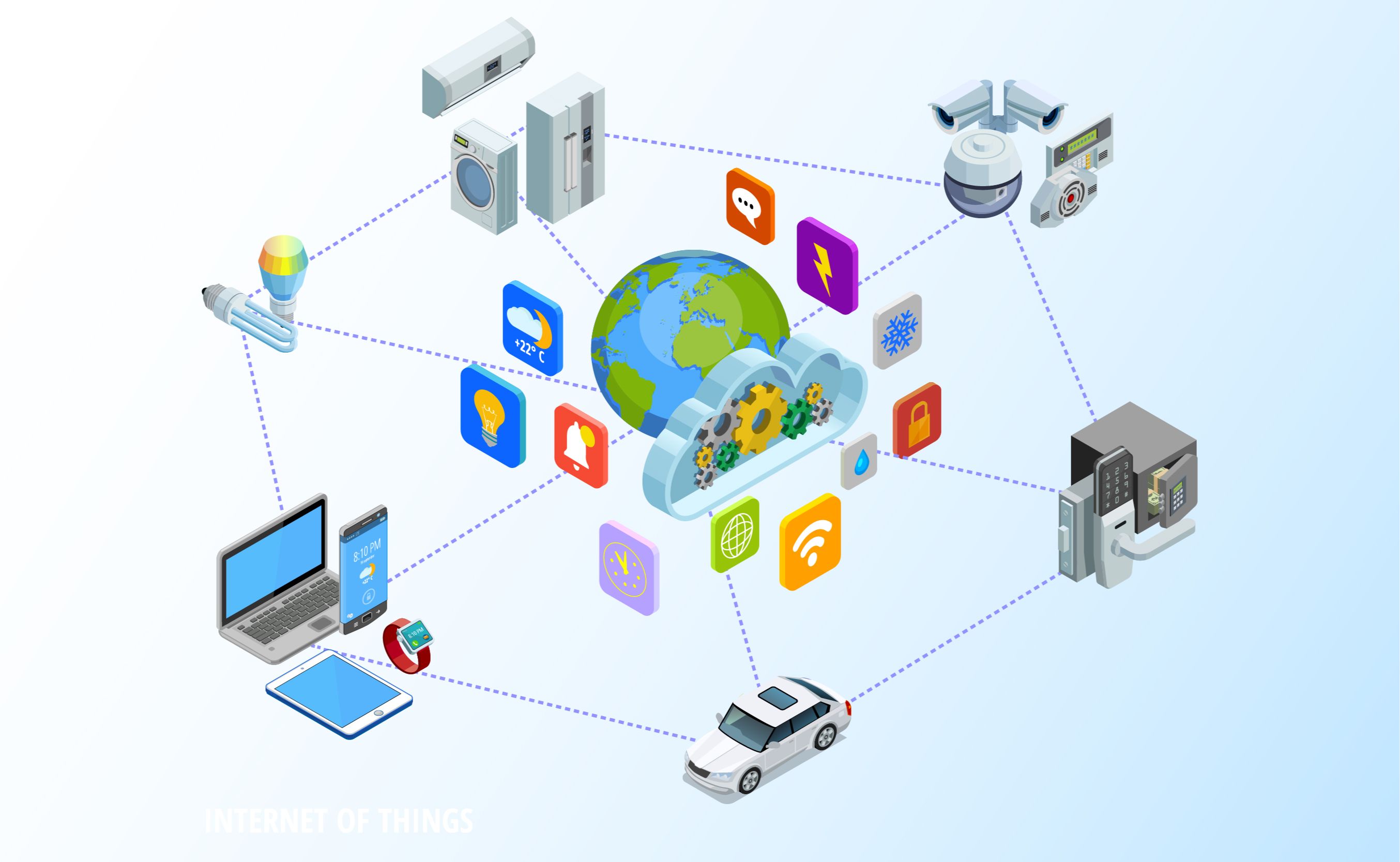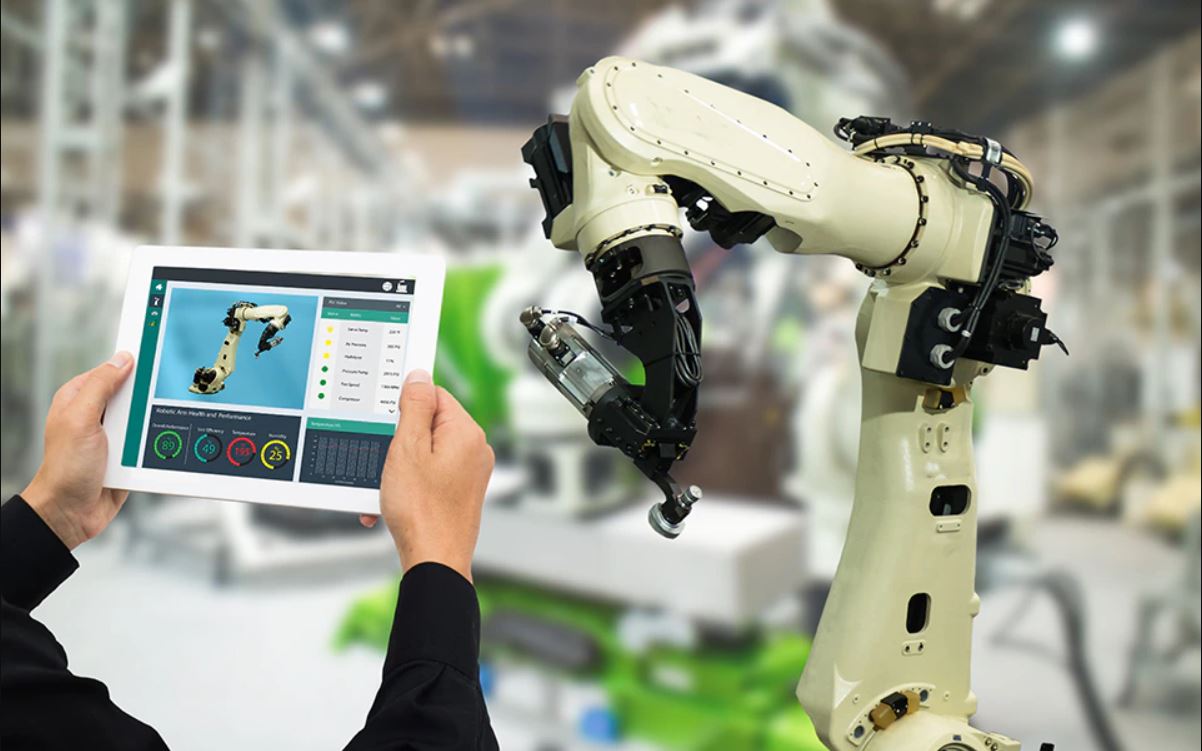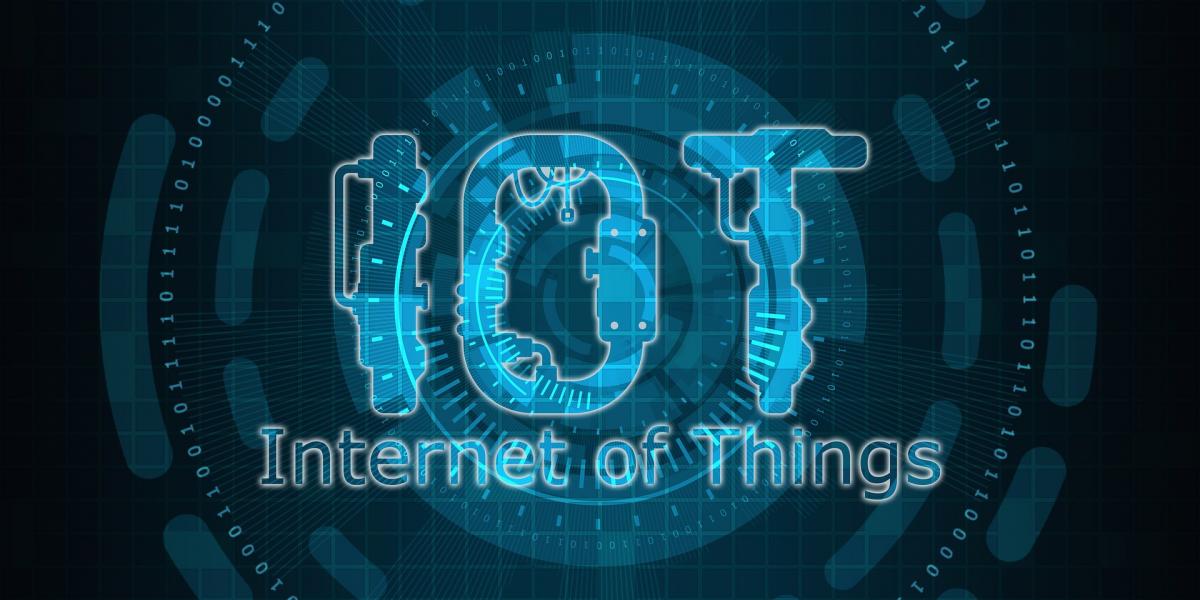Introduction
Welcome to the world of IoT devices! In today’s interconnected world, the Internet of Things (IoT) has become an integral part of our lives. From thermostats to refrigerators, from door locks to security cameras, IoT devices have revolutionized the way we live and interact with our surroundings. These devices, equipped with sensors and connectivity features, offer unparalleled convenience and efficiency.
However, with the proliferation of IoT devices, there comes a growing concern about their security and privacy implications. As these devices become an essential part of our homes and workplaces, it is crucial to understand how to control and secure them effectively.
In this article, we will delve into the world of IoT devices, explore the security risks associated with them, and provide practical tips on how to secure and control these devices. Whether you are a tech-savvy individual or a novice in the IoT realm, this guide will equip you with the knowledge to make informed decisions to protect your privacy and ensure the safe utilization of IoT devices.
By following these best practices, you can gain greater control over your IoT devices and experience the convenience and efficiency they offer without compromising your security or privacy. So, let’s dive in and discover the fascinating world of IoT and how to effectively manage and control these devices!
Understanding IoT Devices
IoT devices, as the name suggests, are physical devices that are connected to the internet and can communicate with each other, collect and exchange data, and perform various functions. These devices are embedded with sensors, processors, and connectivity capabilities that enable them to interact with their environment and other devices.
IoT devices can be found in various domains, including homes, offices, healthcare facilities, manufacturing plants, and even cities. They are designed to automate tasks, gather data, provide insights, and improve efficiency in different contexts.
Some common examples of IoT devices include smart thermostats that adjust the temperature based on occupancy and weather conditions, smart security cameras that send alerts to your smartphone when motion is detected, and wearable devices that track your fitness activities and monitor your health.
These devices rely on a network infrastructure, such as Wi-Fi or cellular networks, to connect to the internet and communicate with other devices or platforms. They often use protocols such as MQTT or HTTP to exchange data with servers or cloud platforms.
Understanding the basic components of an IoT device is essential. They typically consist of:
- Sensors: These gather data from the device’s surroundings. Examples include temperature sensors, motion sensors, light sensors, and humidity sensors.
- Processor: This is the brain of the device and processes the data collected by the sensors. It can make decisions based on predefined rules or algorithms.
- Connectivity: IoT devices need to establish a connection to the internet to send and receive data. This can be through Wi-Fi, Ethernet, cellular networks, or even Bluetooth.
- Actuators: These are responsible for executing actions based on the processed data. For example, an IoT device controlling a smart lock may activate the lock or unlock it based on commands received from a user.
Understanding the underlying technology behind IoT devices allows us to appreciate their capabilities and potential. It also enables us to make informed decisions about their usage, security, and control.
Security Risks of IoT Devices
While IoT devices offer a myriad of benefits, they also pose significant security risks that should not be overlooked. The interconnected nature of these devices, combined with potential vulnerabilities, can make them attractive targets for hackers and malicious actors. Here are some common security risks associated with IoT devices:
- Weak Authentication: Many IoT devices use default or weak authentication mechanisms, such as simple passwords or no authentication at all. This makes it easier for attackers to gain unauthorized access to these devices and exploit them.
- Software Vulnerabilities: Like any other digital system, IoT devices can have software vulnerabilities that can be exploited by attackers. The lack of regular updates and patches for IoT devices can leave them susceptible to known security flaws.
- Insufficient Encryption: Data transmitted between IoT devices and servers or cloud platforms may not be adequately encrypted, making it easier for attackers to intercept and manipulate the data.
- Privacy Concerns: IoT devices often collect and transmit sensitive personal data. If not properly protected, this data can be compromised, leading to privacy breaches and identity theft.
- Physical Security: IoT devices that are physically accessible can be tampered with or stolen, potentially granting unauthorized access to sensitive information or control over connected systems.
These security risks highlight the importance of taking proactive measures to secure IoT devices and protect our privacy. It is crucial to be aware of the potential risks and stay updated on the latest security practices and vulnerabilities affecting IoT devices.
Although IoT device manufacturers bear responsibility for ensuring device security, users also need to take steps to protect themselves and their devices. By implementing strong authentication, regularly updating firmware, and securing network connections, we can significantly reduce the risks associated with IoT devices.
In the next section, we will explore practical steps to secure and control your IoT devices, allowing you to enjoy the benefits of these devices while maintaining peace of mind.
How to Secure Your IoT Devices
Securing your IoT devices is essential to protect your privacy, data, and maintain the integrity of your connected systems. Here are some practical steps you can take to enhance the security of your IoT devices:
- Change Default Passwords: When setting up a new IoT device, one of the first steps you should take is to change the default password. Use a strong, unique password that includes a combination of letters, numbers, and special characters. Avoid using common or easily guessable passwords.
- Keep Firmware Up to Date: Manufacturers often release firmware updates to address security vulnerabilities and improve functionality. Stay vigilant and regularly check for updates for your IoT devices. Apply these updates promptly to keep your devices protected with the latest security patches.
- Enable Two-Factor Authentication (2FA): Whenever possible, enable two-factor authentication for your IoT devices. This adds an extra layer of security by requiring a second form of authentication, such as a verification code sent to your mobile device, in addition to your password.
- Secure Your Wi-Fi Network: Ensure that your Wi-Fi network is password protected with a strong and unique password. Additionally, consider hiding your Wi-Fi network’s SSID to prevent unauthorized access. Implementing Wi-Fi encryption protocols like WPA2 or WPA3 also adds an extra layer of protection.
- Use a Firewall: Set up a firewall on your home network to monitor and control incoming and outgoing traffic. This can help prevent unauthorized access to your IoT devices and data.
- Disable Unnecessary Features: Review the functionalities of your IoT devices and disable any features that are not needed. Each additional feature increases the attack surface and potential vulnerabilities.
- Regularly Review Privacy Settings: Check the privacy settings of your IoT devices to ensure that they align with your preferences. Disable any unnecessary data collection and sharing options to protect your privacy.
- Secure Physical Access: If your IoT devices are physically accessible, consider placing them in secure locations to prevent tampering or theft. For example, placing security cameras out of reach can help protect them from unauthorized physical access.
Implementing these security measures will significantly enhance the security of your IoT devices and reduce the risk of unauthorized access or data breaches. However, always stay vigilant and keep yourself informed about emerging threats and latest security best practices to ensure you maintain the highest level of security for your IoT devices.
Managing Privacy in IoT Devices
In addition to securing your IoT devices, it is essential to manage your privacy effectively. IoT devices often collect and transmit personal data, which can be vulnerable to misuse or unauthorized access. Here are some strategies for managing privacy in your IoT devices:
- Read Privacy Policies: Before purchasing and using an IoT device, take the time to review its privacy policy. Understand what data the device collects, how it is used, and whether it is shared with third parties. Choose devices that prioritize user privacy and provide clear and transparent privacy policies.
- Minimize Data Collection: Consider disabling or limiting the collection of certain data by your IoT devices. Evaluate if the benefits of certain features or data collection outweigh the potential privacy risks.
- Review Sharing Options: Be mindful of sharing options in your IoT devices. Determine whether you want your data to be shared with the device manufacturer, third-party services, or other users. Disable sharing options that you are not comfortable with.
- Secure Cloud Storage: If your IoT devices store data in the cloud, ensure that the cloud provider follows industry-standard security practices. Opt for providers that offer strong encryption, regular data backups, and robust access controls.
- Enable Privacy Features: Some IoT devices offer privacy-enhancing features such as camera or microphone covers, voice command history deletion, or user activity tracking opt-outs. Take advantage of these features to maximize your privacy.
- Regularly Delete Data: Periodically review and delete unnecessary data stored by your IoT devices. This reduces the amount of data vulnerable to potential breaches and minimizes your digital footprint.
- Consider Local Processing: Some IoT devices offer the option to process data locally instead of sending it to the cloud. This can provide an added layer of privacy by reducing the amount of data leaving your premises.
- Use Privacy-Focused Smart Home Hubs: Consider using a smart home hub that prioritizes user privacy. These hubs offer central control and management of your IoT devices and ensure that your data remains secure and private.
By implementing these strategies, you can effectively manage the privacy of your IoT devices and maintain control over your personal data. Remember, privacy is an ongoing process, and it is important to stay informed about privacy settings, updates, and new features introduced by your IoT device manufacturers.
Controlling IoT Devices Remotely
One of the major advantages of IoT devices is the ability to control them remotely, regardless of your physical location. This enables convenient management and monitoring of your devices, enhancing the overall user experience. Here are some ways to control your IoT devices remotely:
- Mobile Apps: Most IoT devices come with dedicated mobile apps that allow you to control and manage them remotely. Install the relevant app on your smartphone or tablet and connect it to your IoT devices. Through these apps, you can turn devices on or off, adjust settings, and receive notifications or alerts.
- Web Interfaces: Some IoT devices offer web-based interfaces that can be accessed through a web browser on any device with internet connectivity. These interfaces provide similar functionality to mobile apps, allowing you to control and monitor your devices remotely.
- Cloud Platforms: Many IoT devices integrate with cloud platforms that offer remote control capabilities. By accessing the device-specific cloud platform, you can control and manage your devices from any internet-enabled device. These platforms often provide additional features, such as data analytics and scheduling.
- Voice Assistants: Utilizing voice assistants, such as Amazon Alexa or Google Assistant, allows you to control your IoT devices using voice commands. With a simple voice prompt, you can turn on lights, adjust thermostats, or perform other actions without needing to use a phone or computer.
- APIs and Integration: Some IoT devices provide APIs (Application Programming Interfaces) that allow integration with third-party apps or services. This enables you to control your devices through platforms like IFTTT (If This, Then That), which allows you to create custom automation rules and link actions between different IoT devices and services.
Controlling IoT devices remotely offers flexibility and convenience, whether you are away from home or simply prefer the ease of managing your devices from a central location. However, it is important to ensure that the remote control functionality of your IoT devices is secured with strong authentication and encryption to prevent unauthorized access.
With remote control capabilities, you can effortlessly manage and monitor your IoT devices, enhancing the connected experience in your home or workplace.
Controlling IoT Devices Locally
While remote control of IoT devices offers convenience, there are situations where you may prefer to control your devices locally, without relying on an internet connection. Here are some methods to control your IoT devices locally:
- Physical Controls: Many IoT devices come with physical controls such as buttons, knobs, or touchscreens. These allow you to directly interact with the device and control its functions without the need for any external interfaces.
- Smart Home Hubs: Smart home hubs act as a central control point for your IoT devices, allowing you to control them locally through a single interface. These hubs provide a dedicated platform to manage and automate your devices and often support various communication protocols, such as Zigbee or Z-Wave.
- Local Network: Some IoT devices can be controlled directly through your local network without the need for an internet connection. This can be done using protocols like UPnP (Universal Plug and Play) or LAN (Local Area Network) communication.
- Voice Control: Voice-controlled IoT devices, such as smart speakers or voice assistants, often allow for local control through voice commands. This means you can activate or adjust devices without relying on an internet connection.
- Offline Mobile Apps: Certain IoT devices offer offline functionality through mobile apps. These apps allow you to control your devices locally within your home network without requiring an active internet connection.
- Smart Switches: Installing smart switches or smart plugs enables local control of IoT devices that are connected to them. These switches allow you to manually turn devices on or off or schedule their operation without relying on remote connectivity.
Controlling IoT devices locally gives you peace of mind, as it does not rely on an internet connection and ensures that you have control even in the event of connectivity issues or internet outages.
While local control may not provide as much flexibility as remote control in terms of access from anywhere, it offers added security and the ability to maintain control within your physical environment.
Consider your specific needs and preferences when deciding between remote and local control methods for your IoT devices. In some cases, a combination of both remote and local control options may provide the best overall experience.
Using Voice Assistants to Control IoT Devices
Voice assistants have become increasingly popular in homes, offering a convenient and hands-free way to interact with various devices and services. These powerful AI-powered assistants, such as Amazon Alexa, Google Assistant, or Apple Siri, can also be used to control your IoT devices. Here’s how you can utilize voice assistants to control your IoT devices:
- Device Integration: Ensure that your IoT devices are compatible with the voice assistant of your choice. Most popular voice assistants support a wide range of IoT devices, including smart lights, smart thermostats, and smart plugs.
- Set Up and Connect: Follow the setup instructions provided by the voice assistant and connect your IoT devices to the assistant’s ecosystem. This usually involves enabling the specific skill or app for your device and linking your accounts.
- Voice Commands: Once your devices are connected to the voice assistant, you can use voice commands to control them. For example, you can say “Hey Google, turn off the living room lights” or “Alexa, set the thermostat to 72 degrees.”
- Routines and Automation: Voice assistants often allow you to create routines or automation sequences that combine multiple actions across different IoT devices. For instance, you can create a bedtime routine that turns off lights, locks doors, and adjusts the thermostat with a single voice command.
- Grouping and Customization: Many voice assistants allow you to create groups or rooms to control multiple IoT devices simultaneously. You can also customize names for your devices to make voice commands more intuitive and personalized.
- Device Status and Feedback: Voice assistants can provide status updates on your IoT devices. You can ask questions like “Is the front door locked?” or “What’s the temperature in the living room?” to get real-time information about your devices.
- Third-Party Integrations: Voice assistants often integrate with other third-party services and platforms, like home security systems or streaming services. This allows you to control a broader range of devices and services through a single voice assistant.
Using voice assistants to control your IoT devices offers a hands-free and convenient experience. You can control your devices with simple voice commands, without needing to physically interact with them or rely on mobile apps or remote controls.
Take advantage of the flexibility and customization options offered by voice assistants to create a seamless and personalized IoT control experience in your home or workplace.
The Role of Smart Hubs in Controlling IoT Devices
Smart hubs play a crucial role in managing and controlling IoT devices, acting as a central control point and enabling seamless integration between various devices and services. These intelligent devices serve as the backbone of your smart home or workplace ecosystem. Here’s a look at the key role smart hubs play in controlling IoT devices:
Device Compatibility and Integration: Smart hubs are designed to work with a wide range of IoT devices, regardless of brand or communication protocol. They act as a bridge, allowing different devices to communicate and interact with one another. This compatibility ensures that all your IoT devices can be controlled and managed from a single hub.
Centralized Control: Smart hubs provide a centralized control interface for managing multiple IoT devices. Rather than using separate apps or interfaces for each device, you can control and monitor all your devices through one hub. This streamlines the user experience and simplifies the management of your IoT ecosystem.
Automation and Scenes: Smart hubs enable the creation of automation rules and scenes, which allow for seamless coordination between multiple devices. For example, you can create a “Good Morning” scene that turns on the lights, adjusts the temperature, and starts playing your favorite music, all with a single command or button press.
Interoperability: Smart hubs facilitate interoperability among different IoT devices by translating and standardizing the communication protocols used by various devices. This allows devices that operate on different standards, such as Zigbee, Z-Wave, or Wi-Fi, to work together seamlessly within the same ecosystem.
Local Control: Smart hubs often offer local control options, allowing you to manage your IoT devices even without an internet connection. This ensures that you can control your devices reliably and securely within your home network, without relying on cloud services or remote connectivity.
Enhanced Security: Smart hubs can act as a security gateway for your IoT devices, monitoring and managing network traffic. They provide an additional layer of security by implementing encryption, access control, and firewall capabilities to protect your IoT ecosystem from potential threats.
Data Aggregation and Insights: Smart hubs can collect and aggregate data from various IoT devices, providing valuable insights about energy usage, device performance, and user behavior. This data can be used to optimize and improve the efficiency of your IoT ecosystem.
Overall, smart hubs play a crucial role in controlling IoT devices, offering centralized management, interoperability, automation, enhanced security, and data insights. They serve as the foundation for building a truly connected and intelligent smart home or workplace environment.
Best Practices for Controlling IoT Devices
Controlling IoT devices requires careful consideration of security, privacy, and usability factors. By following best practices, you can ensure a safer and more efficient experience while maximizing the benefits of your IoT devices. Here are some key best practices to keep in mind:
- Implement Strong Authentication: Use strong, unique passwords for your IoT devices and enable two-factor authentication whenever possible. This adds an extra layer of security and reduces the risk of unauthorized access.
- Regularly Update Firmware: Stay up to date with firmware updates provided by device manufacturers. These updates often include security patches and bug fixes, ensuring that your devices are protected against known vulnerabilities.
- Create a Segregated Network: Consider setting up a separate network for your IoT devices, separate from your main network. This helps isolate and protect your other devices, such as computers or smartphones, from potential IoT device-related security breaches.
- Disable Unnecessary Features: Review the functionalities of your IoT devices and disable any features that you don’t need or use. Reducing the attack surface by disabling unnecessary features can minimize potential vulnerabilities.
- Regularly Review and Reset Privacy Settings: Periodically review and adjust the privacy settings of your IoT devices. Disable data collection and sharing options that you are not comfortable with, and regularly clear any stored personal data.
- Secure Your Network: Secure the Wi-Fi network used by your IoT devices with a strong password and encryption protocol (e.g., WPA2 or WPA3). Additionally, consider establishing a guest network for visitors to further isolate your devices.
- Keep an Eye on Manufacturer Updates and Patches: Stay informed about any security updates or patches released by the manufacturers of your IoT devices. Subscribe to their newsletters or follow their official channels to stay updated about any security-related announcements.
- Regularly Review Device Activity: Monitor the activity logs or usage history of your IoT devices. Be alert for any suspicious activity that may indicate a security breach or unauthorized access.
- Disable Universal Plug and Play (UPnP): Disable UPnP on your router or IoT devices if it’s not necessary. UPnP can be exploited by attackers to gain unauthorized access to your devices or network.
- Research and Purchase from Trustworthy Manufacturers: Before purchasing IoT devices, research the manufacturer’s track record of security and privacy practices. Opt for devices from reputable manufacturers with a commitment to providing regular firmware updates and addressing security vulnerabilities.
By adhering to these best practices, you can significantly enhance the security, privacy, and overall control of your IoT devices. Remember that vigilance and proactive security measures are key in protecting your connected ecosystem.
Conclusion
The proliferation of IoT devices has brought tremendous convenience and automation to our homes and workplaces. However, it is essential to prioritize security, privacy, and control when it comes to managing these devices effectively.
In this article, we explored various aspects of controlling IoT devices, including understanding how they work, the security risks they pose, and practical steps to secure and manage them. We discussed the importance of reading privacy policies, keeping firmware up to date, and using strong authentication methods.
We also highlighted the role of smart hubs in controlling IoT devices, as well as the convenience and flexibility that voice assistants provide in managing these devices through voice commands.
Best practices, such as implementing strong authentication, regularly updating firmware, and reviewing privacy settings, are crucial for maintaining a secure and private IoT ecosystem. By following these practices, you can protect your data, devices, and privacy from potential vulnerabilities and breaches.
Ultimately, the key to effectively controlling IoT devices lies in maintaining a balanced approach. Stay informed about the latest security practices, be proactive in implementing security measures, and regularly review and update your device settings.
As technology continues to advance, the IoT landscape will evolve, bringing new devices and capabilities. By staying vigilant and practicing good IoT device control, you can fully embrace the benefits of these devices and ensure a secure and efficient connected experience for years to come.







